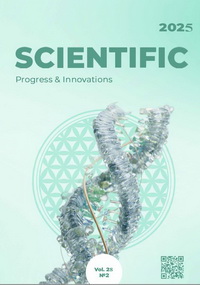Application of Kombiflor Probiotic in the case of intestinal dysbiosis in domestic dogs and cats
DOI:
https://doi.org/10.31210/spi2025.28.02.23Keywords:
diagnostics and therapy of animals, dogs, cats, digestive system, dehydration, oliguria, urinary systemAbstract
The article describes the results of a study of the effect of the complex probiotic Modes Kombiflor Probiotic on the clinical parameters and composition of the intestinal microbiome of domestic dogs and cats with dysbiosis. The aim of the study was to determine the effect of the investigational drug on the body of dogs and cats with dysbiosis. The subjects of the study were clinically healthy and sick domestic dogs and cats. The methods of the study were clinical and microbiological. The drug was administered in recommended doses for 14 days. It was found that the intestinal microflora of clinically healthy dogs is mainly represented by Escherichia coli, Streptococcus spp., Klebsiella pneumoniae, Bifidobacterium spp. and Lactobacillus spp. In case of dysbiosis, the activity of these microorganisms decreases, along with an increase in the activity of Staphylococcus epidermidis, Klebsiella spp., and cultures of Candida spp. and Staphylococcus aureus are detected. After the probiotic administration, among the clinical symptoms, intermittent diarrhea was detected in 12.5 % of dogs, in 87.5 % of animals no clinical symptoms were recorded, the fecal microbial landscape consisted of active cultures of Escherichia coli, Streptococcus spp., Bifidobacterium spp., Lactobacillus spp. In addition, a high activity of Enterococcus faecium culture was detected. In clinically healthy domestic cats, Lactobacillus spp., Bifidobacterium spp., Escherichia coli were the permanent representatives of the microflora in 100 % of animals. In some healthy cats (30–40 %) Clostridium butyricum, Staphylococcus epidermidis and Streptococcus spp. were recorded. In cats with dysbiosis, a significant number of obligate and opportunistic microflora were recorded – Clostridium butyricum, Klebsiella spp., Streptococcus spp., and in 27.8 % – Candida spp. After treatment, the intestinal microbiome of cats contained normal intestinal flora typical of clinically healthy animals, mainly cultures that are part of the studied probiotic.
Downloads
Published
How to Cite
Issue
Section
License
Copyright (c) 2025 Scientific Progress & Innovations

This work is licensed under a Creative Commons Attribution 4.0 International License.

 Creative Commons Attribution 4.0 International Licens
Creative Commons Attribution 4.0 International Licens